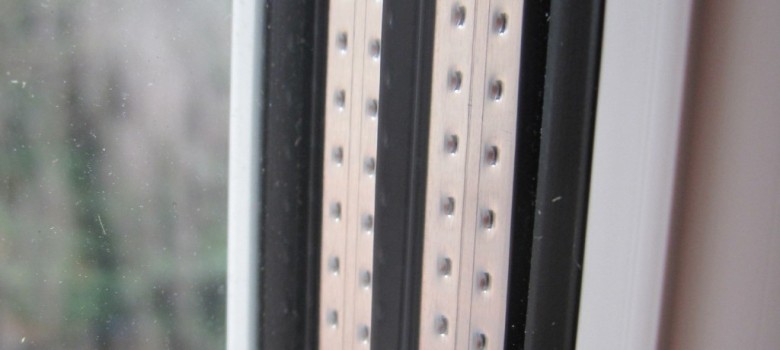I have draughty wooden frame sash windows. What should I do?
There are lots of homes across the UK with draughty wooden sash windows, and we often get asked the best way to make them more energy efficient.
- Should you just draught proof or go through a full restoration process?
- Should you switch to standard double-glazing?
- What kind of sash double-glazing is available?
In this blog we take a look at your options and help you find out what is best for your property – beginning with the cheapest options first:
Draught proofing your sash windows
Draught proofing is something you can get done professionally whilst refurbishing the windows, or as a separate service, and it is also covered under the Green Deal. Draught proofing is the most cost-effective way of improving the efficiency of your windows, and is particularly effective on sash windows, as they are more prone to draughts than standard windows. It essentially involves creating an air tight seal around the frame of each of the sliding windows in the sash frame.
Draught proofing your windows can save you around £50 a year, so it is definitely worth considering. You can get a professional to draught proof your home, and this will cost between £200-400, but you can also DIY it if you feel up to the task, at a fraction of this cost. You can find out more about draught proofing sash windows here, and buy window draught proofing here.




Installing curtains and blinds
Thick curtains are also often overlooked as a means to help reduce heat loss from windows. If you have a pair of existing curtains on the sash window, see if you can install thermal curtain lining to the back of them to improve their thermal efficiency.
If you have no curtains at all, consider installing them since during the winter a thick pair of curtains can really help stop cold draughts.
The advantage of this option is that if you’re adept at DIY around the house you should be able to install the railing and curtains yourself. The disadvantage is that not everyone likes the sight of curtains and they may block some useful light, making the place look gloomier than it should do.
Installing secondary glazing to sash windows
There are two types of secondary glazing available on the market place today – fixed permanent glazing and temporary secondary glazing.
Fixed secondary glazing normally has panels that slide over one another, but cannot be removed from the window frame. Once frowned upon as a cheap, ugly addition to a home, modern secondary glazing can actually look fairly stylish, and vastly improve the thermal performance of the window.

Both secondary glazing options are significantly cheaper than new double glazing, and they allow you to keep the period features intact, since your home will look identical from the outside.
Permanent secondary glazing is also covered under the green deal, and you could be looking at a bill of around £300 per window compared to the cost of new double glazed sash at well over £1,300 per window. Temporary secondary glazing is cheaper than permanent secondary glazing too, with a typical install cost of around £110 per square meter.
Refurbishing sash windows
Sash windows are designed to be refurbished regularly, every decade or so. Over time, the frame and glass will become loose in the sash box, as a result of the movements of the house along with the expansion and contraction of the wood – this means that gaps for draughts are more likely to develop over the years. In addition, since most older sash windows are made from wood, they are more likely to rot over time, so regular painting is essential to help prevent this.
Refurbishing will of course cost far less (approximately £200 a window) than new windows, and could give your windows a new lease of life. The refurbishing process involves being dismantled, eased, adjusted, re-aligned, re-corded and re-assembled, and having a brush pile draught sealing system installed. As well as improving the efficiency of the windows it will also make them smoother to open and help cut out draughts. It is an ideal time to get professional draught proofing installed as well.
A typical cost for this service is around £200 per window, so it is not dirt cheap, but significantly less expensive than new windows! Sometimes it can save you just as much as new windows as well.
Double glazing sash windows
Replacing your sash windows with double glazing sash units is the last option and the most expensive.
To give you an idea of cost, wooden sash windows can cost around £1,300 each, whilst uPVC tend to be cheaper at about £700 per window. Sash double glazing windows are still much more expensive than getting traditional double glazing, which works out at about £300 per window on average.
As we have mentioned elsewhere, it is never cost-effective in terms of energy efficiency to switch to double glazing, even on an older property with large sash windows. The energy savings by replacing single glazed windows with double glazed are nowhere near as substantial as many window companies claim. Having said that, new windows can absolutely improve the appearance of the property and also make rooms feel far more comfortable in terms of temperature, so it is still something we would recommend if funds are available.
uPVC sash windows
uPVC sash windows are now available, and they are about a third cheaper than wooden sash equivalents. The advantage of uPVC of course is that less maintenance is required, and they generally come with lengthy guarantees, but their lifespan is likely to be less than well-maintained wooden sash windows. Unfortunately, uPVC also have the potential to devalue a period property, as people prefer the original wooden windows aesthetically.
Can I get a Government subsidy to cover sash window replacement ?
There are no national grants as such for new windows, but one option for those still keen on new double glazing is to speak to your local council’s domestic property services. Some councils have offered grants in the past for windows, so it is always worth a try.
Sash windows don’t have to be hard work!
As you can see, you don’t need to fret if you have sash windows; there are plenty of options available to you, with a range of costs. Think hard before completely changing your windows, as this is likely to be the most expensive option.
Installing new windows
Need your windows replaced? We have scoured the country for the best tradespeople, so that we can make sure we only recommend those we really trust.
If you would like us to find you a local installer, just fill in the form below and we will be in touch shortly!







